Black War
Videos
Page
The Black War was a period of violent conflict between British colonists and Aboriginal Tasmanians in Tasmania from the mid-1820s to 1832. The conflict, fought largely as a guerrilla war by both sides, claimed the lives of 600 to 900 Aboriginal people and more than 200 British colonists. The near-destruction of the Aboriginal Tasmanians and the frequent incidence of mass killings have sparked debate among historians over whether the Black War should be defined as an act of genocide.
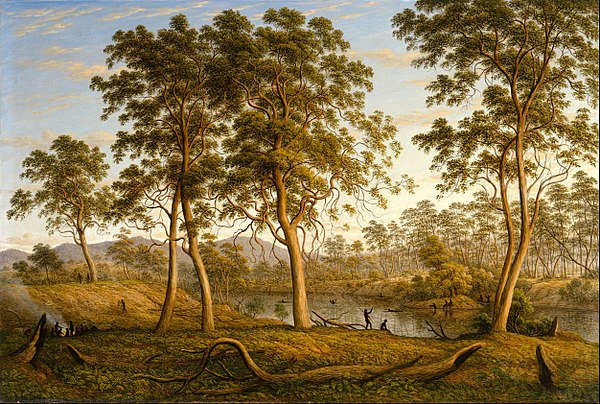
Natives on the Ouse River, Van Diemen's Land by John Glover, 1838.
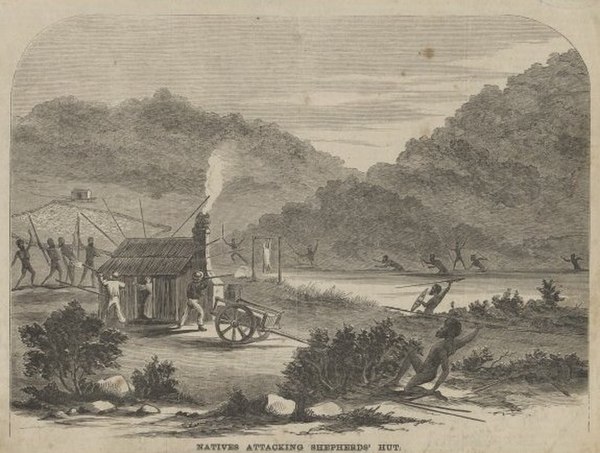
Samuel Calvert's depiction of Aboriginals attacking a shepherds' hut as released in The Illustrated Melbourne Post.

Proclamation board labelled "Governor Davey's Proclamation" painted in Van Diemen's Land about 1830, in the time of Governor Arthur. Nailed to trees, proclamation boards were designed to show that colonists and Aboriginal people were equal before the law, and they depicted a policy of friendship and equal justice which did not exist at the height of the Black War.

Samuel Thomas Gill's depiction of a night-time punitive raid on an Aboriginal camp
Aboriginal Tasmanians
Videos
Page
The Aboriginal Tasmanians are the Aboriginal people of the Australian island of Tasmania, located south of the mainland. For much of the 20th century, the Tasmanian Aboriginal people were widely, and erroneously, thought of as being an extinct cultural and ethnic group that had been intentionally exterminated by white settlers. Contemporary figures (2016) for the number of people of Tasmanian Aboriginal descent vary according to the criteria used to determine this identity, ranging from 6,000 to over 23,000.
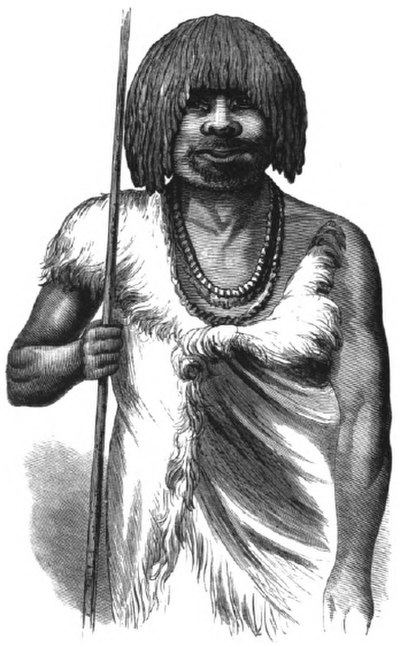
Illustration from The Last of the Tasmanians – Wooreddy, Truganini's husband

A picture of the last four Tasmanian Aboriginal people of solely Aboriginal descent c. 1860s. Truganini, the last to survive, is seated at far right.
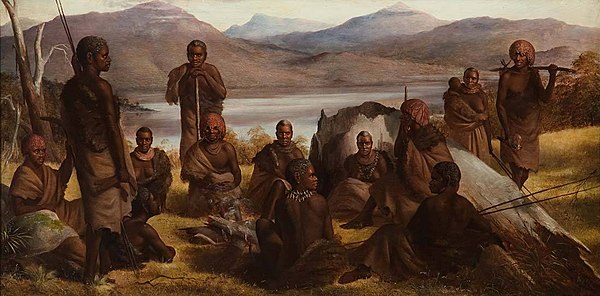
Robert Dowling, Group of Natives of Tasmania, 1859. Critic Bernard William Smith assessed the work as a "history painting in the full sense of the word", with the natives "seated – emblematic of their situation – around the dying embers of a burnt-out log near a great blackened stump, and in the far left corner there is a leafless tree with shattered branches."
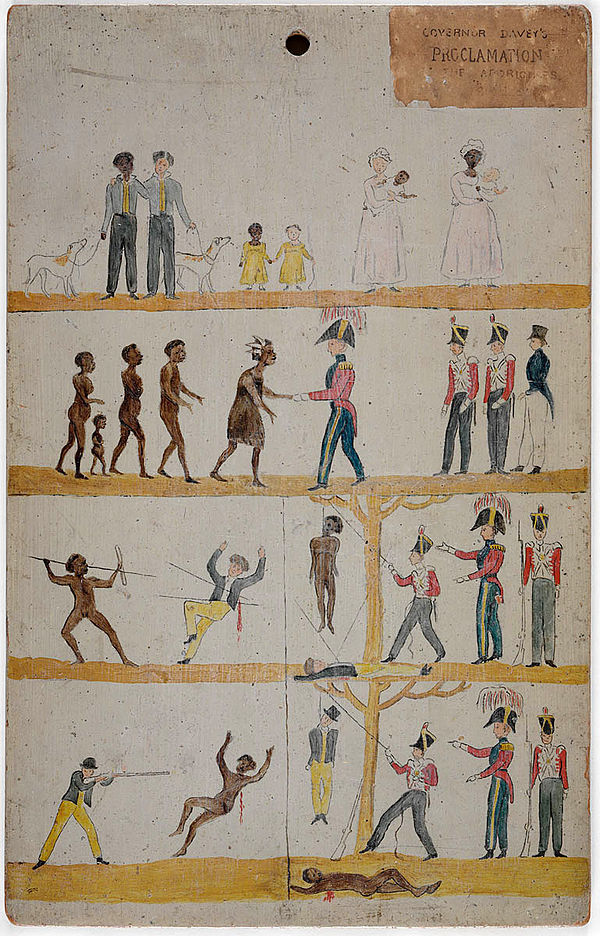
Proclamation (c. 1828–30) by Sir George Arthur to Aboriginal Tasmanians, claiming that they would receive equal treatment before the law.